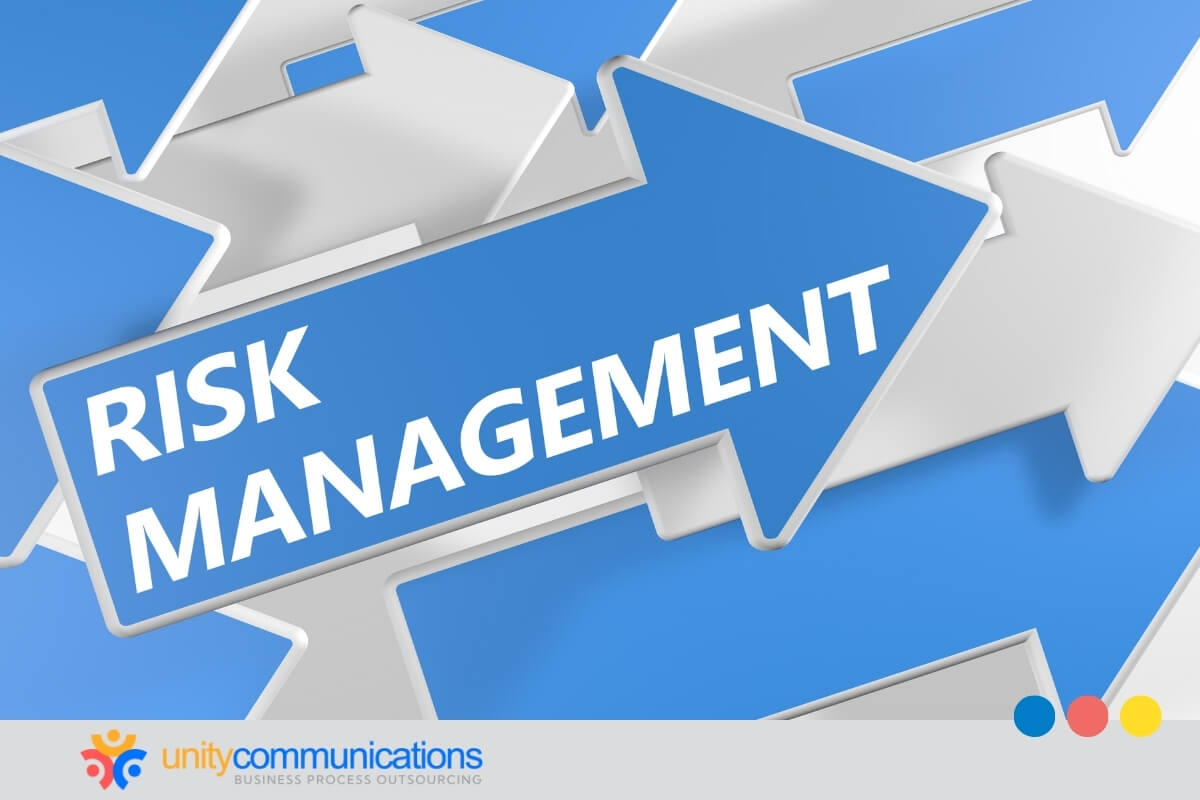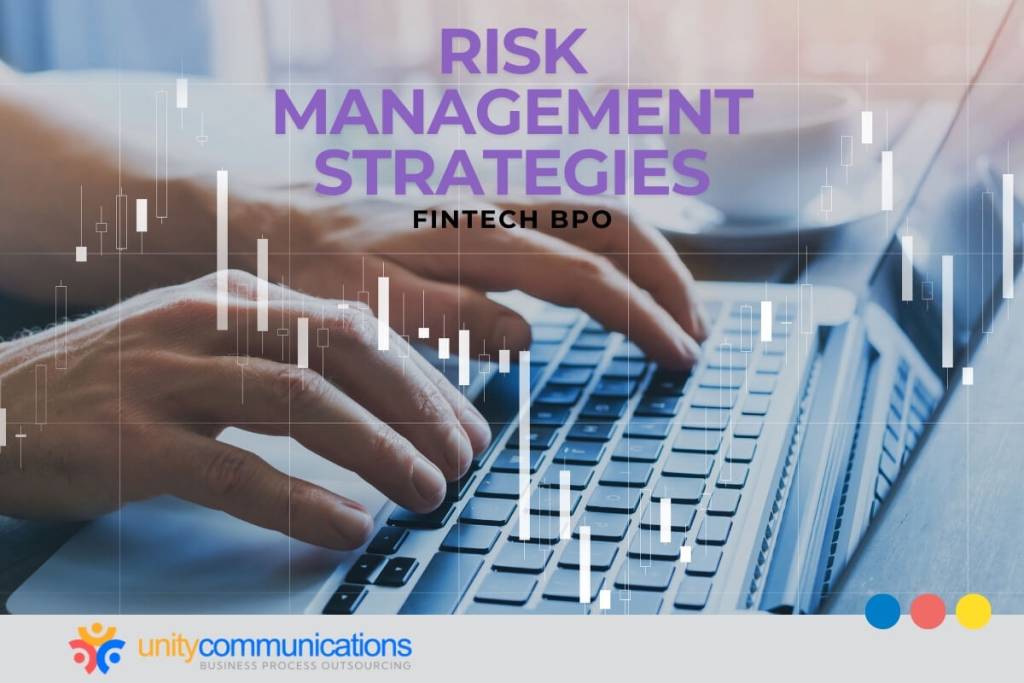Table of Contents
Business process outsourcing (BPO) has emerged as a pivotal strategy for operational efficiency in the financial technology (fintech) industry.
Fintech BPO involves delegating non-core functions to external service providers. Although the business practice streamlines processes and reduces operating costs, it poses significant risks to fintech companies.
Adequate preparation and proactive mitigation are crucial for success. This article explores risk management strategies and best practices for safeguarding operations in fintech BPO. Keep reading to learn actionable insights!
1. Identify and analyze potential operational risks

The first step in any effective risk management strategy is determining and assessing potential threats and issues. According to Safety Culture, a global tech company known for its workplace safety platform, risk awareness proactively reduces the likelihood and impact of problems.
Understanding risks helps you anticipate what could go wrong and how severe the consequences can be. Thus, you can make more informed decisions about allocating resources.
Here are the processes you should take to ensure a productive risk identification and assessment initiative:
Conduct brainstorming sessions
Gather diverse BPO agents specializing in various departments, including compliance, operations, information technology (IT), and customer service. Consider techniques such as mind mapping to encourage creative thinking and identify potential risks.
This cross-functional risk management strategy aims to answer the most significant challenges fintech BPO teams could face that could lead to problems. Some issues that might come up include:
- Cybersecurity breaches (e.g., malware, phishing attacks, social engineering, denial of service attacks, zero-day attacks, man-in-the-middle attacks)
- Regulatory compliance (e.g., non-compliance fines and penalties, reputational damage, operational disruption, loss of license)
- Operational risks (e.g., human error, system outages, fraudulent activity, process failures, workforce disruptions)
Natural disasters could also threaten your operations. Like a contact center for e-commerce, your fintech BPO company might have data storage facilities at risk during calamities. Severe cases could lead to data loss or corruption.
Engage in issue scenario planning
As with employer of record (EOR) services, your fintech BPO teams must stay updated on industry-specific regulations, especially data security. In 2023, 27% of data breaches handled by Kroll occurred in the finance industry.
Scenario planning is a risk management strategy that helps identify compliance gaps in fintech BPO processes. With cybercriminals developing new hacking techniques, consider scenarios leveraging emerging technologies or exploiting weaknesses in your business model. Examples include social engineering attacks targeting high-level employees with access to sensitive data.
Evaluate risk severity and impact
To properly design risk management strategies, you must understand the severity of each identified issue through threat assessment. It has two primary components: likelihood and impact.
Evaluate likelihood by examining historical data, industry trends, and existing controls, classifying risks as high, medium, or low. Next, analyze the potential impact, including financial, reputational, and operational damage. Classify threats into high-, medium-, or low-impact categories.
2. Establish risk management strategies for fintech BPO teams

Once you’ve identified potential threats that might arise in your fintech BPO operations and their impact, the following steps are prioritization and mitigation. These risk mitigation processes help ensure you focus on the most critical issues and minimize their effects.
Here’s a quick guide for these two crucial steps:
Risk prioritization: Guiding your focus
When several uncertainties arise, you wouldn’t want to waste your resources on one that deals the least damage. Thus, it’s critical to know which issues you should prioritize.
Using the information you’ve gathered through risk identification and assessment, create a matrix that categorizes potential issues based on priority. Here’s an example you can use to guide your strategies:
| Impact | High likelihood | Medium likelihood | Low likelihood |
|---|---|---|---|
| High impact (red) | Critical risks | High priority | Consider mitigation |
| Medium impact (yellow) | High priority | Moderate risk | Monitor |
| Low impact (green) | Consider mitigation | Monitor | Low priority |
Risk prioritization provides valuable insights for strategic resource allocation, budget planning, and security investments. It empowers you to address potential problems before they escalate into significant disruptions.
Risk mitigation: Proactively reducing issues
Once you’ve identified and prioritized risks, you might start mitigating the likelihood and impact of these threats. Here are some risk mitigation and management strategies to consider for your fintech BPO operations:
- Implement technical controls (e.g., firewalls, data encryption, and intrusion detection systems)
- Apply procedural controls (e.g., access control policies, password management guidelines, and incident response plans)
- Develop contingency plans (e.g., disaster recovery and business continuity plans)
Well-defined mitigation strategies lessen potential damage, even if a risk materializes. For example, WeRize, a financial services platform in India, suffered zero losses from a cyberattack thanks to its systems and processes.
3. Engage in threat awareness and management employee training

Effective risk management goes beyond simply implementing controls and hoping for the best. Unlike outsourcing in other industries, Fintech BPO manages vast sensitive data and constant regulatory changes. Thus, adaptability and proactivity are critical.
One way to achieve these is through regular employee training. It creates a dynamic environment where risk awareness is embedded in everyday procedures, fostering a vigilant workforce.
Here are a few engaging and effective risk awareness and management strategies you can apply to your fintech BPO teams:
Targeted training
Generic training often fails to resonate with employees. Targeted programs address this by focusing on the risk landscape by department, specific tasks and responsibilities, and compliance requirements.
To help you develop such workshops, consider the following methods:
- Role-specific training (e.g., phishing attempts for customer service representatives)
- Real-world scenarios (e.g., simulations, case studies, and role-playing)
- Interactive learning (e.g., gamified modules, online quizzes, and breakout sessions)
These strategies empower your employees to actively participate in risk mitigation, allowing you to protect your fintech company.
Open communication channels
Employees are often the first line of defense against security threats. You must create a safe space for them to report concerns. This helps ensure early risk detection and resolution and improves security posture.
One way to do this is to provide them with various channels to relay information. That could include a dedicated hotline (anonymous or confidential), email address, and intranet reporting portal. Confidentiality and protection are crucial in risk communication, as some employees might fear retaliation.
4. Leverage technology integration for proactive risk mitigation

Technology is crucial in ensuring effective risk management strategies for fintech BPO operations. Providers typically carry cutting-edge tools that can help with this endeavor. They leverage these resources to strengthen your threat management strategies and resilience.
Let’s explore the different technologies fintech outsourcing teams utilize to mitigate potential threats in their processes:
Artificial intelligence (AI)
AI is a branch of computer science that involves creating intelligent machines that mimic human cognitive functions, such as learning and problem-solving. In fintech, the technology can analyze vast datasets, including financial transactions, customer behavior, and system logs.
However, AI shouldn’t replace human judgment. Instead, you can use it to simplify the following risk management tasks:
- Anomaly detection: AI can identify patterns in data that do not conform to expected behavior.
- Alert prioritization: AI can analyze and rank alerts based on their potential impact and urgency, allowing you to prioritize critical issues.
- Investigative support: AI can automate data analysis, identify patterns, and provide insights your team might miss.
- Know your customer (KYC) compliance. AI can automate processes, reduce manual errors, and improve the accuracy and efficiency of customer verification.
- Cyber threat intelligence: AI can automate data collection, analysis, and response to emerging threats in cybersecurity.
Automation tools
Routine and time-consuming risk management tasks can be tiresome, leading to lower accuracy and mistakes. Automation tools digitize such rule-based mitigation processes to enhance efficiency and accuracy.
With the right software, you can automate regulatory reporting, data security audits, user access management, incident response, user activity monitoring, and more.
Here are some of the most common automation tools for risk management:
- Patch management tools: These solutions ensure that risk management systems remain secure, up-to-date, and compliant with regulatory standards.
- Configuration management tools: They automate managing, monitoring, and maintaining system configurations in your risk management infrastructure.
- Security information and event management (SEIM) systems: This technology lets you detect, analyze, and respond to security threats in real time.
- Data loss prevention (DLP) tools: They help prevent sensitive data from being shared, leaked, or accessed by unauthorized users.
- Regulatory reporting automation tools: These applications streamline the compilation, validation, and submission of compliance reports to regulatory authorities.
The bottom line
The ever-changing financial technology landscape demands constant adaption, and fintech BPO teams are at the forefront. They must establish robust risk management strategies to protect client data, ensure compliance, and build trust.
You can stay ahead of potential risks through proactive threat identification and assessment and adequate prioritization and mitigation. Embracing technologies and fostering a risk-aware culture further propels your company into becoming a trusted partner in the dynamic fintech industry.
Let’s connect if you want to learn more about risk management strategies in fintech BPO.




